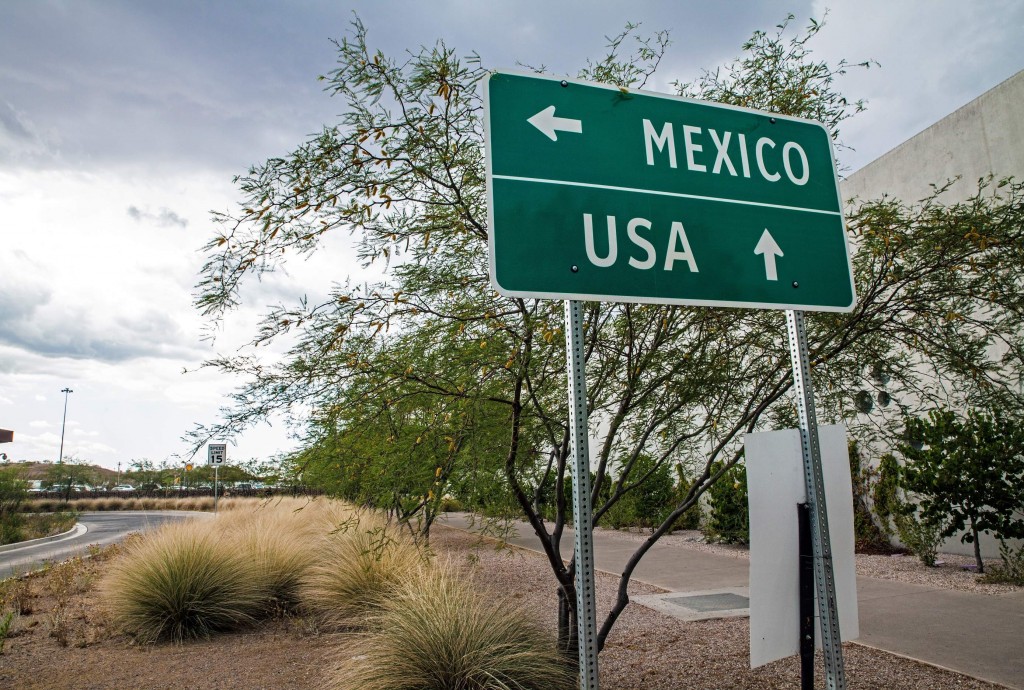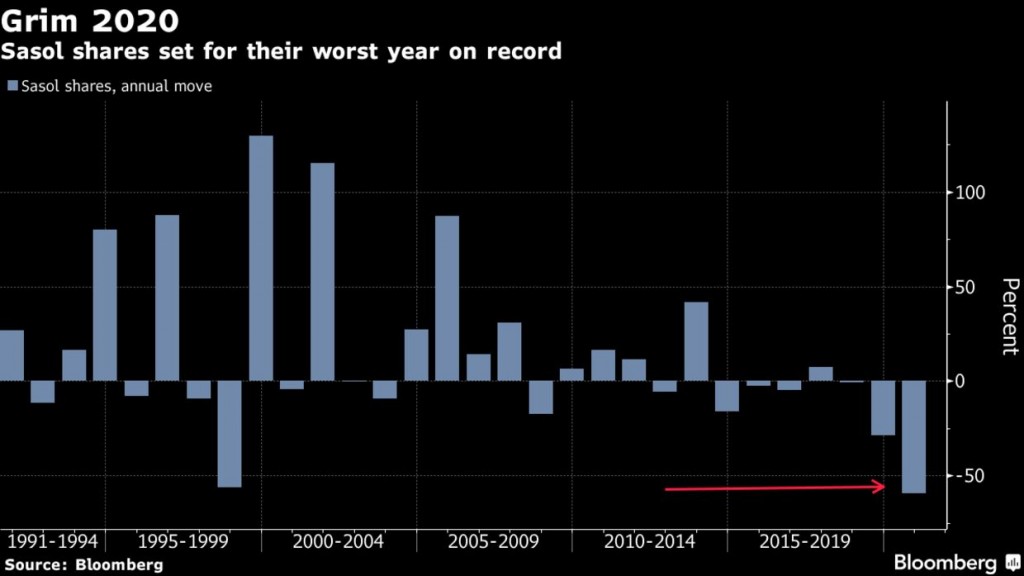Surfactants Monthly
September 2020
There’s a lot to cover this month and so – straight into the news:
Some minor news first from Sasol. We’ll cover the big news at the end of the column, for which this picture is a summary:
Early in September, Sasol expected power to be restored to its Lake Charles site in Louisiana by early to mid-October, the company said in a statement. The site has been shut since 25 August, ahead of Hurricane Laura. "The critical path for startup is restoring reliable external electrical power service from Entergy, Sasol’s local provider," Sasol said in the emailed statement. "Entergy currently expects full load service, industrial-level reliability power will be available to Sasol and other industrial partners in Lake Charles by early-to-mid October," Sasol added. "Sasol’s site damage assessment is well-advanced as well as debris removal from site," the company said. "Sasol will communicate the repair scope and estimated timelines when complete. "We can confirm there was wind damage to the cooling towers as well as some insulation and building damage but maintain no apparent damage to major process equipment at this stage." The company said several hundred contractors are performing cleanup and restoration work to ready the site for startup once electrical power is restored. Sasol produces ethylene, propylene, ethylene oxide (EO), ethylene glycol (EG), phenol, linear LDPE (LLDPE), surfactants and other chemicals at the Lake Charles complex.
My rule regarding event is “you gotta be there” and so we don’t normally report on what went on at conferences etc., unless, it is already reported in the media. So – here we go with an article by ICIS on my recent co-produced surfactants conference which was online and had over 850 people registered(!). The incomparable Robert Fry gave a master-class on the economy. Here’s how ICIS reported on a small portion of it. :
The US recession caused by the coronavirus was the “shortest ever” and is technically over, according to economist Robert Fry, but a full recovery is unlikely until the first half of 2022. “Technically this recession is over, as the way the economy defines a recession it is just the part where economic activity is contracting. When it starts growing again, the recession is officially over,” said Fry. Consultant economist Fry spoke about the impact of the pandemic on the US economy at the ICIS World Surfactants Virtual Conference. “I would call the recovery a script V, not a symmetrical V. We get an initial fast recovery in the third quarter, mostly the goods sector bouncing back, but since we don’t get a recovery in services, growth slows until we get a vaccine.” Demand for products downstream of the surfactants market initially marked a decline in sales when the pandemic hit the US, but has since started making a recovery.
This reflects the trend demonstrated for the rest of the manufacturing sector, which although not yet back to levels marked in February 2020, has been key in stabilising the economy.
“It is interesting to the point of shocking that all of that decline in consumer spending in the services sector, the recovery has been less than half,” said Fry. “In a normal recession it is investment and consumer spending in durable goods that goes down. This time there has been a big hit to services but spending on goods has come back so strongly that it is now higher than it was before recession.”
Fry – former chief economist at DuPont – attributed this to pent-up demand from the second quarter being met, the fiscal stimulus increasing disposable income and the shift in spending from services to goods. “People may have discontinued their gym membership and bought a Peloton…these people are not going to the gym any time soon, so the effect could be very lasting and very persistent,” he said. Another boon for the chemicals sector is the increase in the construction sector, as the indicator for single family housing is now at its highest point since the 2008-09 recession, as people move from city apartments to the suburbs. “Single family is the leading indicator for the housing sector, so this is a good sign for the rest of the economy, especially the goods producing part, as things like carpeting, paint, appliances and furniture should respond well,” said Fry.
Going forward, Fry anticipates that growth will accelerate in the third quarter before flattening out, although this may come in the fourth quarter, depending on when inventories are built back up. “Given what we have seen in goods spending and that inventories got very lean, I think we will see further increases in manufacturing, so that continues to bounce back at a pretty strong clip.” There are still myriad factors that remain weakened by the economic devastation caused earlier in the year.
GDP is tipped to recover to pre-pandemic levels, from the biggest quarterly decline on record since the Second World War, in the first half of 2022. Unemployment in the US remained pitched at 8.4% in August, down from levels of 14% in April, despite previously hitting a 50-year low after four years of declines.
“The pace of recovery and whether or not we have a double dip depends on how many businesses go bankrupt and how that ripples through the financial system and fiscal and monetary policy,” said Fry. Ultimately, the services sector will remain in limbo until a vaccine will encourage more consumer spending in spaces such as restaurants and gyms. Because there is no set timeline for this, companies will need to plan for different scenarios to allow for this uncertainty. “The strength and timing of recovery depend more on medical breakthroughs than economic policies… there has been more uncertainty this year than any year I have been an economist,” concluded Fry.
A news snippet from Brazil: Andres Pires de Oliveira Dias, the CFO of Brazilian conglomerate Ultrapar, owner of surfactants producer Oxiteno, has resigned after five years in the position to pursue other opportunities. The board has appointed Rodrigo de Almeida Pizzinatto, who is already a member of Ultrapar’s executive board and currently CEO of Extrafarma, as his replacement, the company said in a release. Oxiteno is Brazil's sole producer of ethylene oxide (EO) and Latin America's largest specialty chemicals producer. In addition to Oxiteno, Ultrapar also owns fuel distributors Ipiranga and Ultragaz, liquid bulk storage firm Ultracargo, and drugstore chain Extrafarma.
As expected, Stepan Company has completed its acquisition of Clariant's anionic surfactant business and associated sulfation equipment located in Santa Clara, Mexico. Financial terms of the deal were not disclosed. "This acquisition supports Stepan's growth strategy in Latin America and enhances our ability to support our customers' growth in the Mexican Consumer and Functional markets for surfactants," CEO F Quinn Stepan Jr said. "We look forward to transitioning customers' supply to Stepan's Ecatepec and Matamoros Mexico facilities over the coming months." [Another solid step in the consolidation of the surfactant market, especially in North America, by Stepan.
Mid-month, Malaysia’s PETRONAS Chemicals and German chemicals and surfactants producer PCC announced that they plan to jointly build an oxyalkylates facility at Kertih in Malaysia’s Terengganu state. The plant will produce ethoxylates and polyether polyols after starting up in 2023. In a related development, PETRONAS has agreed to acquire a 50% stake in PCC’s Malaysian subsidiary, PCC Oxyalkylates Malaysia Sdn Bhd. Capacity or financial details were not disclosed.
Right at the end of the month, Lucas Hall, alcohols guru at ICIS wrote a superb piece. We excerpt it here: US Q4 fatty alcohols contracts are being finalised. Settlements for freely-negotiated contracts of both mid-cut and long chain alcohols have largely emerged at a slight increase from Q3, tracking higher feedstock costs and ongoing production disruptions in the market globally. Seasonally-slower demand as the market heads into Q4 is somewhat offsetting feedstock cost pressures.
Feedstock costs across the oil palm complex have plateaued as China enters the Golden Week Holiday on 1 October and some other northeast Asian countries go on holiday next week. Although feedstock costs have plateaued, the market remains volatile and overall bullish amid ongoing supply concerns with renewed movement restriction being implemented across producing countries in southeast Asia. Demand has seasonally slowed as the market enters Q4, with demand across the core cleaning sector having stabilised following an earlier-year boom alongside the onset of the coronavirus. Demand in industrial end markets is recovering but expected to be slow through the end of the year. Demand is typically slower during the Q4 destocking season.
Sasol expects to resume its Lake Charles operations by mid-October, the company said in early in September. The company remains on force majeure for linear alcohols and surfactants after Hurricane Laura disrupted power at the complex.
Sasol's force majeure has prompted an increase in surfactants demand from other suppliers. However, supply from the wider market is overall sufficient to meet demand, as demand is expected to be seasonally slower in Q4. The outage at Indorama's US Port Neches, Texas, plant as a result of the storm has also weighed on demand for Q4 alcohols. The plant began restart operations on 9 September after shutting on 25 August. The demand recovery for C16-18 and single cut C16 and C18 alcohols is starting to pick up, as demand in industrial end markets like automotive and oil and gas - where they are used in the production of durable plastics and other polymers - improves as movement restrictions ease and economies reopen. C16 alcohols are tighter relative to the blended C16-18 and C18 cuts, leading to a slight premium for C16 alcohols relative to the two. Mass balance premiums are largely in the 3-5 cent/lb range.
Some of you may know that ICIS keeps a really comprehensive database of supply and demand. Here is a excerpt of some information relating EO/EG capacity as of the beginning of October.
Of the nine EG producers in North America, six are idled and/or have separately declared force majeure due to planned maintenance, unplanned outages or aftereffects from Hurricane Laura.
The outages and force majeure declarations cover 61% of US EG capacity, according to the ICIS Supply and Demand Database.
The following EO/EG sites are experiencing issues:
| Company | Location | Status |
| Indorama | Clear Lake, Texas | Unplanned shutdown |
| Lotte | Lake Charles, Louisiana | Shut down |
| Sasol | Lake Charles, Louisiana | Shut down |
| Shell | Scotford, Alberta, Canada | FM on EG due to feedstock issue |
Scheduled maintenance is as follows:
| Company | Location | Timing |
| Shell* | Geismar, Louisiana | Sep-Oct |
| Dow* | Seadrift, Texas | mid-Sep-Oct |
| Formosa* | Point Comfort, Texas | Aug-Dec |
*according to market sources; not confirmed by company
Now for the big Sasol News
As first reported by ICIS on Friday October 2nd by Tom Brown. LyondellBasell has agreed to form a joint venture with Sasol that will see it take a 50% stake in certain assets at the South Africa-based firm’s petrochemicals complex in Lake Charles, Louisiana. The 50/50 joint venture will see the US-based firm pay $2bn for a stake in the 1.5m tonne/year cracker at the complex, as well as low density polyethylene (LDPE) and linear low density polyethylene (LLDPE) production units at the site, along with related infrastructure. The joint venture will operate under the name Louisiana Integrated PolyEthylene JV and includes customary rights for each partner around the potential future sale of its ownership stake, the companies said.
“The transaction is expected to be accretive to both cash flow and earnings per share within one year, with significant upside as market conditions continue to improve,” said LyondellBasell CEO Bob Patel. Under the terms of the deal, LyondellBasell will operate the US base chemicals assets on behalf of the joint venture in an arrangement that will see some Sasol employees transferred to the US firm. Sasol will retain full ownership of the Ziegler and Guerbet alcohols, ethylene oxide and glycols, and ethoxylates production facilities at the site. The deal is expected to close by the end of the year. [So – interesting. Sasol JV’s out the basics and holds onto the more specialized and surfactants related products] .
ICIS’s Joseph Chang, in an excellent analysis, goes deeper into the deal later in the day: LyondellBasell’s $2bn deal to take a 50% stake in Sasol’s Lake Charles, Louisiana cracker and polyethylene (PE) operations is considered a “deep value investment” near the bottom of the cycle with low execution risk, its CEO said on Friday. “LyondellBasell is making a deep value investment in leading assets during trough conditions where we believe there is significant opportunity for cyclical upside,” said Bob Patel, CEO of LyondellBasell, on an investor call.
“We’re able to be opportunistic… and the cyclical upside is a big driver in terms of why do this as opposed to de-lever or do [stock] buybacks. We just think it’s a unique opportunity to acquire world-scale and new assets,” he added. LyondellBasell picks up a 50% stake in Sasol’s 1.5m tonne/year ethane cracker along with a 470,000 tonne/year linear low density PE (LLDPE) and a 420,000 tonne/year low density PE (LDPE) unit. Patel estimates that a well-executed new cracker complex with downstream PE units, utilities and infrastructure would cost roughly $6bn today. Sasol’s Lake Charles cracker complex, which also includes detergent alcohols and ethoxylates and was beset by cost overruns, cost around $13bn. LyondellBasell will fund the deal with cash and debt. At the end of Q2, it had $2.6bn in cash and $14.3bn in debt. Following the completion of the deal, expected by the end of 2020, it will focus on paying down debt.
LyondellBasell expects the Sasol deal to be accretive to earnings per share and cash flow within a year. Annual synergies of around $50m are expected by the third year on improved uptime and operating rates from LyondellBasell’s operational expertise.
The CEO drew parallels between the Sasol cracker investment and its 50/50 Bora JV in China which started up in September 2020. “When the two JVs are taken together, we are essentially acquiring the full capacity and the immediate financial benefits of a new and operational world-scale integrated cracker complex with minimal exposure to the risks from project execution, timing uncertainty and opportunity costs that are typically incurred during the multi-year construction of these facilities,” said Patel. “The other thing I like about both these JVs is that in one case we’re leveraging low-cost feedstocks (Sasol) and in the other we’re producing in the fastest growing market in the world (Bora). So we’re not just betting on one thing - we’re doing both,” he added.
LyondellBasell will operate the Sasol cracker and PE assets, and sell all the products through its global marketing network. Picking up an extra 300,000 tonnes/year of excess ethylene capacity from the Sasol cracker, LyondellBasell will bring its net long ethylene position to around 800,000 tonnes/year which it considers manageable given its extensive US pipeline network. New downstream projects will not being considered until mid-decade and beyond, said Patel. Patel outlined the potential earnings before interest, tax, depreciation and amortisation (EBITDA) from its recent growth investments it expects to harvest over the next three years - over $200m in annual synergies from the A. Schulman acquisition, $180-200m from its US Hyperzone high density PE (HDPE) plant, $400-450m in 2023 from its propylene oxide/tertiary butyl alcohol (PO/TBA) project, and unspecified amounts for its Bora, Sinopec (PO/styrene) and Sasol JVs for a total of “over $1bn in incremental EBITDA”.
And on top of this, the CEO sees cyclical upside with ethylene and PE margins getting back to 2017-2019 levels in the next 3-5 years. PE demand growth in China has rebounded to almost normal levels at around 4-5% year-to-date through August, with US demand growth of about 1.5%, he noted. On the supply side, Patel noted delays and cancellations of projects due to crude oil price uncertainty as well as financial constraints. “I’ve been through a lot of cycles in the 30-plus years I’ve been in the business.. and what’s key is that you pay bottom of the cycle valuations that reflect bottom of the cycle [conditions],” said Patel.
Toward the end of the day, ICIS Al Greenwood noted that the deal will allow Lyondell to acquire a 50% stake in ethylene and polyethylene (PE) plants at a price below their replacement value, according to Fitch Ratings Service.
Under the agreement, LyondellBasell will pay Sasol $2bn for the stakes in the plants, which are in Sasol's complex in Lake Charles, Louisiana, US. Fitch said it views the joint venture favourably as an opportunistic deal because it is below the replacement cost of the plants. As a result, LyondellBasell is effectively adding capacity while avoiding completion and start-up costs. In addition, the plants are on the US Gulf Coast, giving them access to low-cost ethane, Fitch said. LyondellBasell will operate the plants on behalf of the joint venture, so it could find ways to improve the operations of the plants and to expand margins, Fitch said. The complex's LDPE plant will increase LyondellBasell's exposure to the more resilient packaging and consumer-health end markets, Fitch said. It also increases the company's exposure to the more cyclical automobile and industrial sectors. The deal should close by the end of 2020.
Fitch commented about the joint venture as part of the credit ratings it issued for LyondellBasell. It rated the company BBB, which falls within Fitch's investment-grade ratings. Because of the Sasol deal, Fitch expects LyondellBasell's debt to rise in relationship to its earnings before interest, tax, depreciation and amortisation. (EBITDA).
Debt-to-EBITDA should rise to 4.5x in 2020 from 2.1x in 2019 because of the joint venture; the decline in sales prices and volumes; and steps the company took to increase its liquidity. Once LyondellBasell completes the joint-venture deal, debt/EBITDA should start falling, Fitch said. By 2023, it should approach or even drop below 2.5x. In regards to LyondellBasell's cash flow, it should be slightly negative in 2020 after LyondellBasell pays dividends. In 2021 and 2022, free cash flow should swing to $700m-$900m. Afterwards, free cash flow should exceed $1bn. Total net debt should fall below $12bn by 2023. Revenue should decline by 22% in 2020. It should start growing sequentially thereafter and return to 2019 levels by 2023, Fitch said.
Fitch made its forecasts based on the assumption that Brent crude prices will be $41/bbl in 2020, $45/bbl in 2021 and $50/bbl in 2022. Long-term, Brent oil prices should be $53/bbl. LyondellBasell makes PE, polypropylene (PP), olefins, chemical intermediates and oil products. It also has a compounding business. Fitch said it is the third largest chemical company after BASF and Dow.
Some more about the deal appeared in the financial press. Bloomberg noted that Sasol has been looking to reduce borrowings after a series of cost overruns and delays at its Lake Charles chemicals project in Louisiana were exacerbated by a historic rout in the oil market. The deal will cut debt to about $8 billion from $10 billion, the company said, building on the disposal of other assets such as last month’s sale of an air-separation unit to Air Liquide SA for 8.5 billion rand ($509 million).
“This sale was widely anticipated and the $2 billion price is broadly in-line with our assessment of market expectations,” Morgan Stanley analysts led by Christopher Nicholson said in a note to clients.
While the Lake Charles stake has been the market’s main focus in Sasol’s asset sales, a process to sell its 50% share in a natural gas pipeline that runs from Mozambique to South Africa is still underway.
Alongside the asset-sale plan, Sasol is considering a rights offer of as much as $2 billion before the end of June even after saying the move is a last resort. “This, if implemented, would allow Sasol to operate sustainably within its covenant thresholds,” the company said, adding that the timing and amount to be raised would be dictated by the market. Lake Charles was approved in 2014 at an estimated cost of $8.1 billion, but has exceeded the company’s worst-case scenario and is now expected to cost $13 billion. The debacle cost former co-Chief Executive Officers Bongani Nqwababa and Stephen Cornell their jobs after an investigation found serious mismanagement in the development of the plant. They were replaced late last year by Fleetwood Grobler.
That's it for September. Keep an eye on the calendar for our upcoming surfactants events in partnership with ICIS. Next up November 10 - 11.













